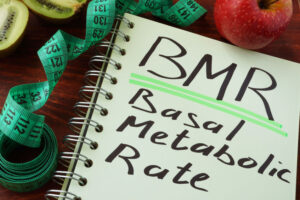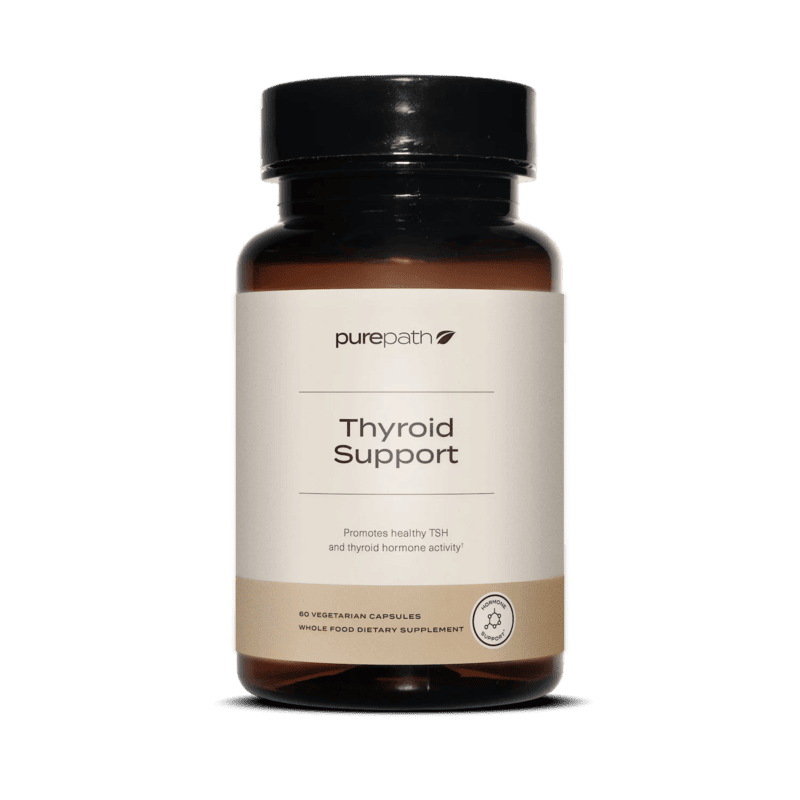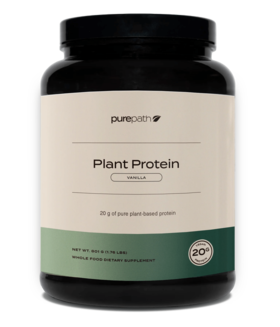As an advocate for your own health and fitness, it’s a sure bet you’ve thought about how good your metabolism is at burning calories. That’s because most of us equate our metabolism with aging…
The faster your metabolism is, the younger you are.
 Your “metabolic rate” is the common name that describes how well your body burns calories each day without exercise. Researchers often refer to this as Basal Metabolic Rate (BMR). Your BMR is the total calories burned each day for basic functions plus the number of calories your body burns while it’s at rest.
Your “metabolic rate” is the common name that describes how well your body burns calories each day without exercise. Researchers often refer to this as Basal Metabolic Rate (BMR). Your BMR is the total calories burned each day for basic functions plus the number of calories your body burns while it’s at rest.
Knowing what factors play into your BMR has a remarkable range of health benefits. That’s because it’s the one tool that can help you gain, lose, or maintain your ideal weight. And that goes much further than just how you look.
We now know that carrying too much weight, or worse, obesity, leads to health problems such as Type 2 diabetes, heart disease, and certain cancers. In contrast, managing your weight within a healthy range can reduce your risk of health problems, as you’ll see it is the foundation of optimal health.
In this article, you’ll learn how to improve your BMR to reach and maintain your ideal weight, maximize energy levels, stay physically active, and optimize every aspect of your life.
What makes up your BMR?
Your BMR is a combination of several factors, including:
- Sex
- Weight
- Height
- Age
- Ethnicity
- Weight history
- Body composition
- Genetic factors
While genetics sets many of these factors, you can take steps to change your BMR. To achieve this change in BMR, your first steps should be to increase your lean muscle.
Muscle keeps you young
 Muscle is more metabolically active than fat, meaning muscle burns more calories than fat while you are at rest. So instead of thinking of your body weight in terms of, one pound is one pound, refocus your fitness goals around the reality that the composition of that one pound is more important. To be exact, your body burns 6 calories per hour per pound of muscle and 2 calories per hour per pound of fat.
Muscle is more metabolically active than fat, meaning muscle burns more calories than fat while you are at rest. So instead of thinking of your body weight in terms of, one pound is one pound, refocus your fitness goals around the reality that the composition of that one pound is more important. To be exact, your body burns 6 calories per hour per pound of muscle and 2 calories per hour per pound of fat.
On average, 1lb of muscle will burn (within 24 hours) an extra 96 extra calories per day.
So while it is common for people to say they have a “slow metabolism” we have known for years that resistance training can help build lean body mass and maintain fat loss thus increasing your BMR.
Quick workouts burn more
Resistance training increases lean muscle by exercising a muscle or a muscle group against external resistance, such as barbells or weight machines. But you don’t need to become a bodybuilder to benefit. In fact, a recent study compared a quick and exhausting exercise program, dubbed High-Intensity Interval Resistance Training (HIIRT) with a more traditional bodybuilding style routine. They found that 15-30 minutes of HIIRT was more effective at burning calories in the 24-hour period following exercise.[1]
Hormones and metabolism
Exercise experts often refer to HIIRT as “metabolic conditioning” because it not only builds lean muscle, but keeps your body burning extra calories for the next 24-hours. Metabolic conditioning also promotes the release of your body’s natural fat burning hormones like growth hormone, that positively influences your metabolism.
Essential nutrients
So far we’ve learned that lean muscle and hormones drive your metabolism. Now, let’s explore the foods and supplements that positively affect your BMR.
The metabolic effect of food
Between proteins, carbohydrates, and fats (the three macronutrients), the protein you eat delivers the greatest benefits to your BMR. Protein contributes 4 calories of energy for every gram you eat, but the body uses roughly 20-30% of those calories to process them in the body. We refer to this phenomenon as the thermic effect of food. This is the energy required for digestion, absorption, and disposal of each individual nutrient.
A great way to get the most out of the protein you eat is to be sure you eat some within one hour after doing resistance exercise. Getting in your post-workout protein is easily achieved by using one of MaxLiving’s delicious protein powders, like MaxLiving’s vegan-friendly PurePath Plant Protein.
Beyond protein, carbohydrates have the next highest thermic effect and burn roughly 5-15% of those calories to process in the body. As for the fat you eat, it has the lowest thermic effect and burns about 5% of those calories to process in the body.
Optimizing metabolism with thyroid support
 An article about metabolism would not be complete without discussing the thyroid gland. The thyroid is the gland responsible for releasing the hormone thyroxine. Thyroxine plays an extremely important role in regulating your metabolism and many other tissues in the body. Problems with the thyroid can include hypothyroidism, also known as underactive thyroid. This is when the thyroid gland is not producing enough thyroxine. When this occurs, metabolism can become sluggish, causing weight gain and abnormally low energy levels to occur.
An article about metabolism would not be complete without discussing the thyroid gland. The thyroid is the gland responsible for releasing the hormone thyroxine. Thyroxine plays an extremely important role in regulating your metabolism and many other tissues in the body. Problems with the thyroid can include hypothyroidism, also known as underactive thyroid. This is when the thyroid gland is not producing enough thyroxine. When this occurs, metabolism can become sluggish, causing weight gain and abnormally low energy levels to occur.
While there are several thyroid support products on the market, PurePath’s Thyroid Support is carefully crafted with essential nutrients like vitamin A, zinc, and copper, scientifically proven to optimize thyroid performance. To further enhance its efficacy, Thyroid Support features a unique blend of regenerative organic herbs and botanicals known for their ability to harmonize the thyroid and bolster your immune system. This is much safer than synthetic thyroid, which you can only get by prescription.
About the Author
 Zach Zovath graduated with a Bachelor’s degree in Exceptional Education from the University of Central Florida. He continued on to receive his Master’s degree from the College of Education and Human Performance at the University of Central Florida. He is a master level personal trainer, coach, and health consultant. In addition, his specializations include corrective exercise, performance enhancement, prenatal/postpartum core stability, and exercise therapy. As a result of his education and experience in the health and fitness industry, he has developed fast and effective exercise programs for health care facilities.
Zach Zovath graduated with a Bachelor’s degree in Exceptional Education from the University of Central Florida. He continued on to receive his Master’s degree from the College of Education and Human Performance at the University of Central Florida. He is a master level personal trainer, coach, and health consultant. In addition, his specializations include corrective exercise, performance enhancement, prenatal/postpartum core stability, and exercise therapy. As a result of his education and experience in the health and fitness industry, he has developed fast and effective exercise programs for health care facilities.
References
[1] Burgomaster, K. A., Howarth, K. R., Phillips, S. M., Rakobowchuk, M., MacDonald, M. J., McGee, S. L., & Gibala, M. J. (2008). Similar metabolic adaptations during exercise after low volume sprint interval and traditional endurance training in humans. The Journal of physiology, 586(1), 151-160.



